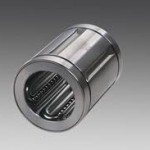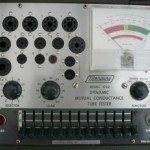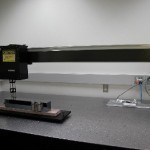Magnetic propulsion is the act of moving an object with magnetic fields and a flowing electrical current. The current is used to manipulate the system’s magnetic field or charge a fluid in the system that can be repelled. The Lorentz force then pushes the conductor in a direction that is perpendicular to the magnetic field and the conductor. The repulsing force is then used to propel the system, which is designed to take advantage of this effect. Governments and industries continue to invest significant time and money into the field Read More
What is the Fifth State of Matter?
The fifth state of matter is actually the first phase of matter. It is called a Bose-Einstein Condensate. Matter in the fifth state is really slow moving and extremely condensed. It only exists at near absolute zero temperatures and is very fragile and unstable. It was discovered in 1995 by Eric Cornell and Carl Weiman through experimentation with rubidium, but the credit goes to Satyendra Nath Bose and Albert Einstein because they thought of the concept of this state of matter first. The only difference is that they did not have the tools available to Read More
Pulse Induction Metal Detectors
Metal detector technology has been used for a number of decades to locate various metallic artifacts and precious metallic ores. An uncommon, but accurate metal detector is the Pulse Induction Metal Detector. It uses Pulse Induction Technology to find metals. What is Pulse Induction Technology? In Pulse Induction technology, a coil is used as a transmitter and receiver. Pulse Induction metal detectors are likely to have a single coil, but there are others that have additional coils. Powerful pulses of current are sent through the coil. The pulses create magnetic Read More
How Do Microwaves Work?
In the modern world, virtually everyone owns a microwave oven. How many people, though, stop to consider what exactly microwave ovens do or how they work? To anyone who has been alive over the past few decades, microwave ovens are as normal as anything else; to someone born even a century ago, however, they would be considered extremely futuristic. This article will explain what microwave ovens do and list the parts that make microwave ovens work so that readers can appreciate the science of these marvelous devices. What Do Microwave Read More
What Are Bucky Balls Used For?
A bucky ball is a fullerene molecule which is any molecule that is made up entirely of carbon. Specifically, a bucky ball is a spherical fullerene while the cylindrical fullerene is called a carbon nanotube. They were discovered in 1985 and are referred to, chemically, as C60. When they were discovered, it expanded the number of carbon allotropes–the way the atoms are aligned–which had, before this, been diamond, graphite and soot/charcoal. Now fullerene molecules adds another allotrope to the mix. Because scientists are still working hard on determining what bucky Read More
What Are Linear Bearings?

Linear bearings are a type of free motion enabling assemblage that operates in a single dimension. They are used in a wide variety of applications. Most linear bearings need to use a precision shafting and a lubrication system to run efficiently. There are both motorized and non-motorized versions of the linear bearings. There are two main sub-categories of linear bearings: Rolling Element Slide – Rolling element linear bearings are designed with rolling elements to aid in sliding movement. The movement is achieved with a lower friction that the rolling elements, Read More
What is Transconductance?

Transconductance is a property of some electronic components and is also known as mutual conductance. It is the opposite of resistance. The measure of transconductance is the ratio of the electrical current change at an output port as compared to the voltage change at the input port. The measure of transconductance is commonly used in reference to vacuum tube ratings as well as other electronic devices. Devices With Measurable Transconductance Vacuum tubes, bipolar transistors, field effect transistors, and amplifiers typically have a measurable transconductance value. In vacuum tubes, it is Read More
What is a Laser Profilometer?

A profilometer is an instrument that measures a surface profile to determine its roughness. A surface’s vertical resolution is normally measured at the nanometer level, with lateral resolutions being measured to a less accurate degree. Over the past decade, profilometers have started using laser technology in order to improve the degree to which a surface can be measured without having to physically touch the profile being measured. The most recent laser profilometers have been able to map surfaces in 3D, thereby displaying form and texture over a large area. How Read More
Magnetic Water Treatment
It is common for those who receive hard water all over the world to attempt to find a plausible technique or treatment system to soften the water. Magnetic water treatment is a way to eliminate or reduce the water’s hardness. This technique is also referred to as Anti-scale Magnetic Treatment” (AMT). Those who magnetically treat water claim that passing water through a strong magnetic field changes water molecules and eliminates the need to chemically soften water. These claims are quite controversial as they have not been proven scientifically. How Does Read More
What Are the Five States of Matter?
There are five states of matter that occur when physical forces are applied to them. These states are fairly easy to understand when their physical properties are observed. Depending on the type of matter that is being dealt with, the state of the matter may be more difficult to reach when applying these physical stressors. The best way to understand the state of matter is to choose matter that reaches the state the easiest and observe it. Bose-Einstein Condensates as a State of Matter The Bose-Einstein Condensate is a very special phase of Read More


Share on: